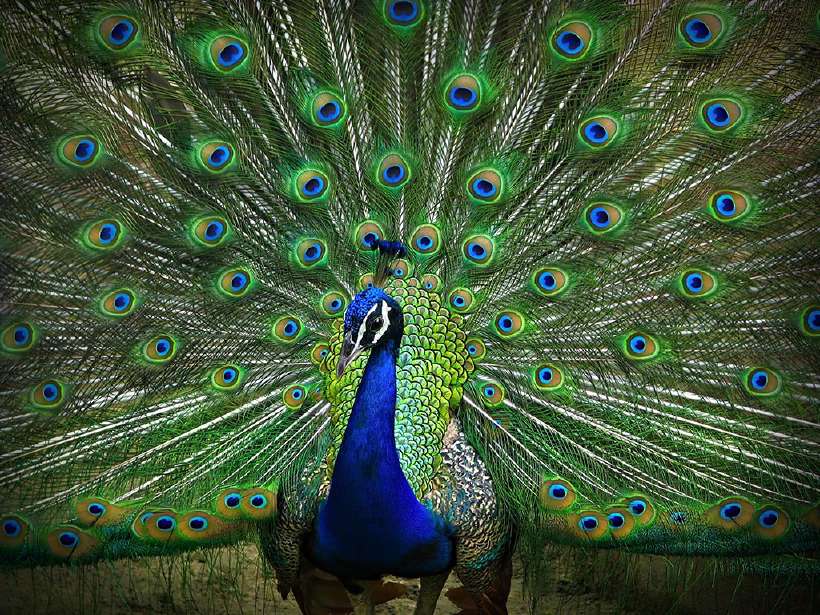Come monsoons, and we immediately think about the beautiful peacock, dancing in the rain, with its luscious tail spread out behind it. Undoubtedly one of the most beautiful birds in the world and a native of the Indian sub-continent, it is not surprising that the Peacock was anointed as the national bird of India in 1963.
![The Exotic Peacock [Illustrations by Neelima Bhushan]](/media/earth-23_1_hu5ae1d8c78a3e9e69443686dfcade23ce_65371_820x0_resize_q60_box.gif)
Hailing from the pheasant family, these exotic birds are cherished for their colourful plumes and eggs. The peacocks, more appropriately called peafowls, (peacock refers to the male) are found in lowland forests and hills usually in small groups consisting of one male and several females.
Peafowls are long-legged birds. The male, known as the peacock, has a blue head with green and purple highlights and a crown-like tuft. Its face has white stripes and the back is green and blue with black undersides. The extraordinarily long tails of males have strong shafts and magnificent colours and extend far beyond the tail, which has twenty feathers. They form a train with oscillate designs and the fan is supported by hidden tail feathers which are much shorter. The primary feathers and tail are of chestnut colour and the train is green with bronze and is covered with blue and green spots that appear to be eyes. The females look quite dowdy in comparison. They do not have the train but have a crown-like tuft.
Though they can fly strongly for short distances, peafowls rarely fly. They are terrestrial and roost at nights.
Omnivorous by nature, they obtain most of their food by scratching the leaf litter with their strong feet. They eat anything from seeds, grains to small reptiles. They enjoy eating young cobras.
Peafowls are polygamous and live in small families. Interestingly the mating season of peacocks coincides with the monsoon season in India. During monsoons, the male and female let out a meowing call which is commonly interpreted as `minh- ao’, which means there will be rain. With the onset of the mating season, the male displays its full trail of feathers to the females. After mating, the peahen makes a nest in the underbush and lays 4 to 8 eggs, which are incubated for about 28 days. The young ones are watched over by the peahen until they can take care of themselves.

Known for their fierce, lively and courageous tempers, the males do not get along with one another and when faced with danger the peafowls become very aggressive.
There are three types of peafowls. The Indian or blue peafowl, the green peafowl of Burma and IndoChina and a rare and aberrant form, the Congo peacock, found in the forests of Congo basin in Africa.
Several myths and legends have been spun around these elegant birds. Peacocks can be traced back to ancient Greek and Roman mythologies. It was supposed to be the favourite bird of Goddess Juno. In India, peacocks are associated with Lord Krishna and Karthikeyan.
501 words |
5 minutes
Readability:
Grade 7 (12-13 year old children)
Based on Flesch–Kincaid readability scores
Filed under: planet earth
Tags: #india, #birds, #trains, #feathers, #peacocks, #mating
You may also be interested in these:
The Lake and the Birds
Polluted India
Killing them Surely
Dr Sarvepalli Radhakrishnan
Little Gyatsu Goes To School